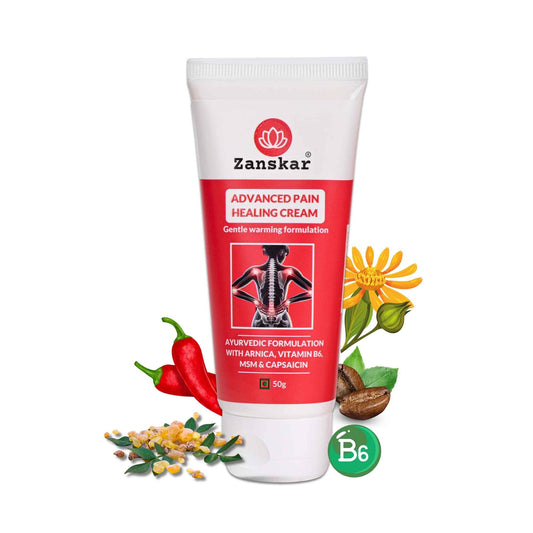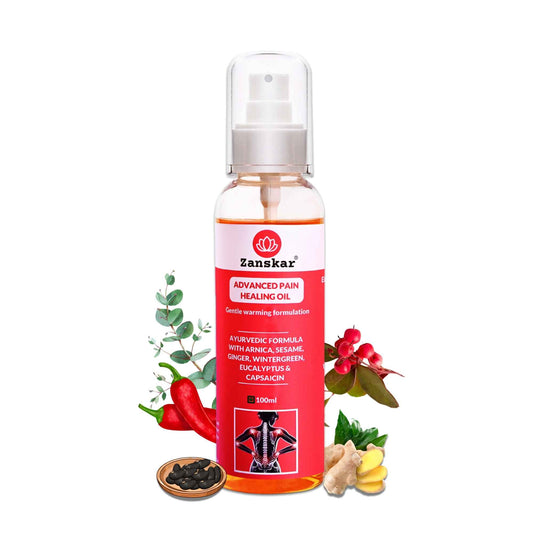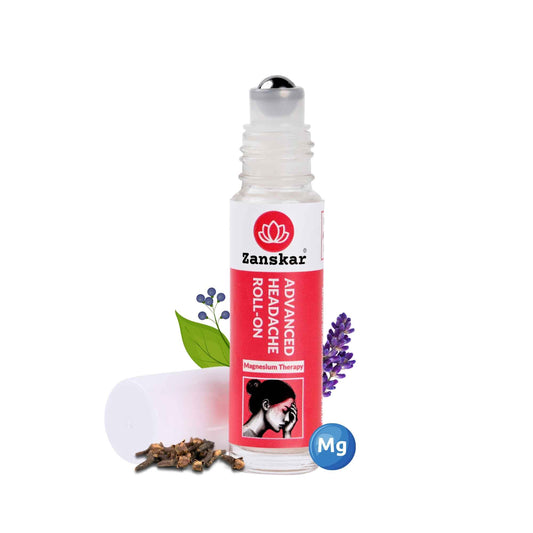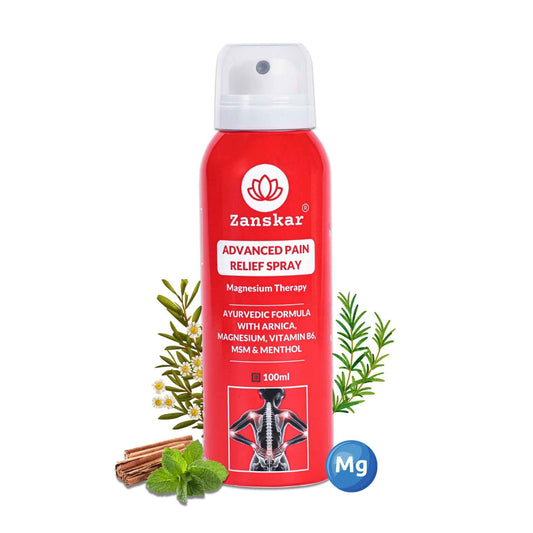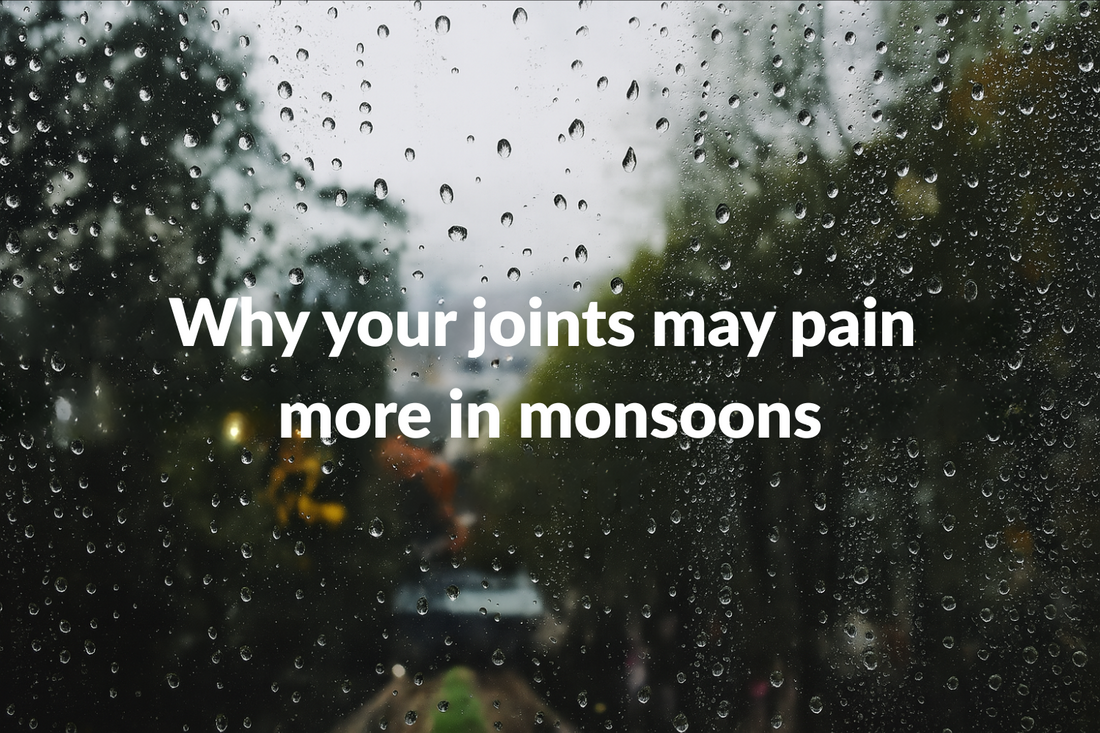
Knees paining more during Monsoons? Here's why it happens
The monsoon season can bring relief from the scorching heat, but for many joint pain patients, it can also bring increased joint pain and discomfort. Every year, as the rains roll in, countless people across India report an increase in joint stiffness, inflammation, and pain. Elders often “feel the rain in their bones”—and modern science now validates this observation.
The Monsoon–Joint Pain Connection
From barometric pressure changes to reduced sunlight and movement, the monsoon creates the perfect storm for joint pain. Whether you’re dealing with OA, RA, old injuries, disc bulges, or general age-related wear and tear, understanding why pain flares up during this season is the first step to managing it better.
1. Barometric Pressure Drops: A Hidden Pain Trigger
One of the most significant meteorological changes during monsoon is the drop in barometric (atmospheric) pressure. This change allows body tissues—especially those around joints—to expand slightly.
For healthy joints, this may go unnoticed. But for joints that are already inflamed or worn down (like in joint pain, spondylosis, or cartilage degeneration), even small changes in tissue pressure can trigger pain receptors and nerve endings, leading to soreness, stiffness, or a dull ache.
Research Insight: A study published in Pain journal (2007) found a measurable association between weather changes—particularly barometric pressure and humidity—and increased pain levels in patients with OA and RA.
2. Cold and Humid Weather Reduces Blood Flow and Flexibility
Monsoon weather often brings a drop in temperature along with high humidity. Cold temperatures cause the body to redirect blood flow to internal organs, reducing circulation to extremities like knees, shoulders, and fingers. This results in muscle stiffness and reduced joint mobility.
3. Reduced Physical Activity = More Pain
During monsoon, many people stop their morning walks or outdoor physiotherapy due to wet conditions. Prolonged inactivity leads to:
- Stiff joints
- Weakened muscles
- Reduced lubrication in joints
- Poor posture (especially with prolonged sitting indoors)
This immobility accelerates the pain cycle—especially in those already dealing with back pain, disc issues, or OA.
Tip: Movement is medicine. Even 10–15 minutes of indoor stretching or yoga can improve circulation, relax muscles, and protect joint integrity during monsoon.
4. Drop in Sunlight = Drop in Vitamin D
Lack of direct sunlight during monsoon leads to a decline in natural Vitamin D synthesis in the skin. Vitamin D is essential for:
- Calcium absorption
- Bone strength
- Joint and muscle function
Low levels of Vitamin D are linked to increased joint pain, poor healing, and even depressive symptoms—all of which can worsen the perception of pain.
5. Humidity-Induced Inflammation
High humidity may worsen inflammatory responses in people with autoimmune conditions like RA, ankylosing spondylitis, or psoriatic joint pain. For these individuals, monsoon triggers can mimic or even intensify flare-ups. Humidity can also make synovial fluid in joints a little more sluggish, further adding to stiffness and discomfort.
Note: Some studies suggest that fluctuating humidity and temperature can influence cytokine activity in autoimmune diseases, amplifying the inflammatory cascade.
How to Protect Your Joints During Monsoon
Managing monsoon-triggered joint pain requires a multi-pronged approach—targeting both symptoms and root causes. Here’s what experts recommend:
1. Keep Moving
- Do low-impact indoor exercises like stretching, yoga, or resistance band work.
- Focus on joint-friendly movements like leg raises, shoulder circles, and spine twists.
- Use physiotherapy apps if you have chronic conditions.
2. Use Anti-Inflammatory Topicals
Topical creams or oils with ingredients like:
- Magnesium – Relaxes muscles and supports nerve function
- Capsaicin – Helps block pain signals
- Ginger & Eucalyptus – Improve circulation and relieve soreness
These can offer localised, side-effect-free relief from monsoon-related joint discomfort. Consider using Zanskar's topical joint pain range.
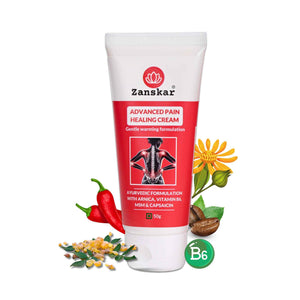
3. Stay Warm
- Apply hot compresses to affected joints for 10–15 minutes.
- Avoid sitting in air-conditioned rooms without covering your knees or back.
- Try a warm shower or bath before bed to loosen stiff joints.
4. Monitor Vitamin D levels
- Get your Vitamin D levels tested if you’re feeling unusually achy or fatigued.
- Supplement if needed—after consulting your doctor.
- Include foods like eggs, fatty fish, sesame seeds, flaxseeds, and leafy greens.
5. Eat Anti-Inflammatory Foods
- Add turmeric, ginger, garlic, amla, and black sesame to your diet.
- Avoid excess sugar, refined carbs, and deep-fried foods.
- Stay hydrated—even if you don’t feel thirsty.
Final Thoughts: Monsoon Pain Isn’t Inevitable
Yes, monsoon can aggravate joint and muscle pain—but it doesn’t have to control your life. With the right lifestyle, consistent movement, and evidence-based topical therapies, you can stay active, pain-free, and healthy throughout the season.
If you or your loved ones struggle with chronic pain, the rains don’t have to mean helplessness. Take charge—listen to your body, support it with the right care, and let healing happen.
Learn More About Zanskar Health
If you have joint pain, muscle pain or headaches that makes it hard to move, Zanskar offers the most advanced full stack pain relief solutions for you.
Now available to purchase, Zanskar® pain-care range have unique bio-active formulations. It provides lasting relief from muscle and joint discomfort that you can feel good about. Get your fix before stocks run out - buy now.
You can also gain access to therapeutic exercises and stretches for your condition by downloading the Zanskar Health physiotherapy mobile app. Additionally, you’ll have a personal care team to guide, support, and tailor our program to you, including behavioral and nutritional coaching.
Download our mobile app here 👉 download and track your exercise streak.
Medical Review: This article is written and medically reviewed by Dr Nishtha Mittal (Senior Health Content Editor at Zanskar Health). This article and its contents are provided for educational and informational purposes only and do not constitute medical advice or professional services specific to you or your medical condition.




